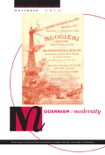
MODERNISM-MODERNITY
Scope & Guideline
Bridging Cultures Through Modernism
Introduction
Aims and Scopes
- Exploration of Modernist Texts and Contexts:
The journal focuses on the analysis of modernist literature and its historical contexts, examining how these texts reflect and respond to the complexities of modernity. - Intermediality and Cross-Disciplinary Connections:
MODERNISM-MODERNITY encourages studies that intersect various forms of media, including literature, film, and visual arts, highlighting how these mediums interact and contribute to modernist discourse. - Cultural and Political Critique:
The journal often engages with themes of cultural nationalism, colonialism, and race, analyzing how modernist works critique social and political structures. - Queer and Gender Studies:
A significant focus on queer theory and gender studies, exploring the roles of sexuality and identity in modernist literature and culture. - Aesthetic and Formal Innovations:
The journal examines the aesthetic experiments and formal innovations within modernist texts, investigating how these elements shape reader experiences and cultural perceptions.
Trending and Emerging
- Transnational and Postcolonial Perspectives:
There is a growing emphasis on transnationalism and postcolonial studies, with papers exploring how modernism intersects with global histories and cultures, highlighting voices that have traditionally been marginalized. - Intersectionality in Modernist Discourse:
Emerging themes focus on intersectionality, particularly how race, gender, and sexuality intersect in modernist texts, revealing complex social dynamics and identities. - Environmental and Ecological Critique:
Recent articles increasingly address ecological concerns and the representation of nature in modernist literature, reflecting a contemporary urgency around environmental issues. - Digital Humanities and Modernism:
The journal is beginning to explore the implications of digital humanities for modernist studies, examining how digital tools and platforms can transform our engagement with modernist texts. - Modernism and Mental Health:
There is a notable increase in scholarship examining the relationship between modernism and mental health, particularly how modernist texts engage with psychological theories and experiences.
Declining or Waning
- Traditional Literary Canon Focus:
There appears to be a waning interest in strictly canonical modernist texts, with fewer articles dedicated to authors like T.S. Eliot or James Joyce, as the journal increasingly embraces a more diverse array of voices and perspectives. - Modernism as a Solely Historical Phenomenon:
Previously, there was a strong emphasis on modernism as a historical period. However, recent publications suggest a shift towards examining modernism's ongoing relevance in contemporary culture rather than solely as a historical artifact. - Eurocentrism in Modernist Studies:
There is a noticeable decrease in papers that focus exclusively on European modernism, as the journal increasingly prioritizes transnational and postcolonial perspectives, reflecting a broader trend towards global inclusivity.
Similar Journals

JOURNAL OF MODERN LITERATURE
Illuminating Modern Texts Through Scholarly InsightJOURNAL OF MODERN LITERATURE, published by Indiana University Press, is a distinguished peer-reviewed journal that delves into critical examinations of modern literary texts and theories. Since its inception, the journal has served as a vital platform for scholars dedicated to the exploration of contemporary literature, making significant contributions to the discourse within the field. With an impressive ranking of Q2 in the Literature and Literary Theory category as of 2023, it positions itself among the top-tier journals in its domain, reflecting its strong impact within academic circles. This journal not only fosters scholarly dialogue but also embraces innovative approaches to literary criticism, ensuring relevance in today’s dynamic cultural landscape. Researchers, professionals, and students will find a rich repository of articles that engage with various modern literary paradigms, enhancing their understanding and appreciation of the intricate relationships between literature and broader socio-cultural contexts. Though it does not operate under an open access model, the journal's extensive reach through its digital ISSN (1529-1464) and print ISSN (0022-281X) allows for valuable insights to be disseminated to the appropriate audiences.

NEUE RUNDSCHAU
Advancing Critical Discourse in the ArtsNEUE RUNDSCHAU is a prominent journal published by S Fischer Verlag GmbH, specializing in the fields of literature and literary theory, as well as visual arts and performing arts. With its roots tracing back to its inception in 1969, this journal has evolved significantly, providing a platform for critical discourse and innovative scholarship in the arts and humanities. Although it experienced coverage changes, the journal remains a vital resource for researchers and academics, contributing to the rich dialogue surrounding cultural studies and artistic expression. Furthermore, while it is not available through open access, NEUE RUNDSCHAU offers essential insights into contemporary literary trends and artistic movements, ensuring its relevance and importance within the academic sphere. With Scopus rankings including a position in the 16th percentile for literature and literary theory, and a 10th percentile placement in cultural studies, the journal embodies a commitment to quality scholarly contributions, making it an invaluable asset for students, professionals, and researchers alike.

REVISTA DE ESTUDIOS HISPANICOS
Bridging Disciplines in the Study of Hispanic IdentityREVISTA DE ESTUDIOS HISPANICOS is a distinguished academic journal published in the United States, dedicated to the exploration of Hispanic studies through a multifaceted lens that encompasses literature, cultural studies, and the performing arts. Established to serve as a platform for innovative research and critical discourse, this journal presents a vibrant collection of peer-reviewed articles that contribute to the understanding of Hispanic cultures and their global impact. With an ISSN of 0034-818X, the journal operates from the esteemed Washington University in St. Louis, providing a scholarly refuge for researchers and students alike. Despite its Q4 status in Cultural Studies, it boasts commendable positions in both Literature and Literary Theory and Visual Arts and Performing Arts (Q3), reflecting its evolving influence in these fields. Although currently not an open-access publication, it remains accessible for institutional subscribers and dedicated scholars eager to delve into its rich content. The REVISTA DE ESTUDIOS HISPANICOS aims to foster dialogue and interdisciplinary research, making it an essential resource for anyone committed to advancing knowledge and appreciation of Hispanic heritage and arts.
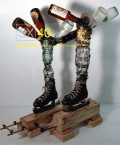
Small Axe
Bridging Disciplines for a Deeper Understanding of CultureSmall Axe is a distinguished academic journal published by DUKE UNIVERSITY PRESS, focusing on the intersections of Cultural Studies, Literature and Literary Theory, and Sociology and Political Science. With an ISSN of 0799-0537 and an E-ISSN of 1534-6714, this journal has garnered significant recognition in its field, achieving a Q1 ranking in Literature and Literary Theory and a Q2 in Cultural Studies as of 2023. Its commitment to fostering scholarly dialogue on critical issues stretches through converged years from 2018 to 2024, ensuring timely and relevant contributions to the discourse. Although not an Open Access journal, it provides valuable insights and research that are pivotal for academia, driving forward conversations on social justice, identity politics, and the dynamic nature of culture. With strong Scopus ranks that affirm its impact—placing it in the 89th percentile for Literature and Literary Theory and the 65th percentile for Cultural Studies—Small Axe is instrumental for researchers, professionals, and students who are invested in the nuanced exploration of contemporary societal issues.

Metacritic Journal for Comparative Studies and Theory
Connecting Theories and Practices in Contemporary Research.Metacritic Journal for Comparative Studies and Theory is a premier scholarly publication focusing on interdisciplinary research within the fields of Arts and Humanities, as well as Social Sciences. Published by UNIV BABES-BOLYAI, FAC LETTERS, PHANTASMA CTR IMAGINATION STUDIES, this Open Access journal has made significant strides since its inception in 2015, providing a platform for innovative comparative studies that inspire critical discourse. With an impressive Q2 ranking in both Arts and Humanities and Social Sciences, the journal showcases high-quality research that engages contemporary issues and theoretical frameworks. Its Scopus rankings further highlight its impact, with a noteworthy position in the 78th percentile for Arts and Humanities and 40th percentile for Social Sciences. As an accessible resource for researchers, professionals, and students, the journal encourages contributions that navigate complex themes of interpretation and imagination that resonate within and beyond Romanian scholarship. Discover the latest insights and foster collaborations in a dynamic academic landscape.
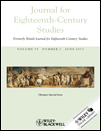
Journal for Eighteenth-Century Studies
Advancing Interdisciplinary Dialogue in Eighteenth-Century StudiesThe Journal for Eighteenth-Century Studies, published by WILEY, serves as a pivotal platform for scholars in the intersecting fields of cultural studies, history, literature, and the visual and performing arts. With an ISSN of 1754-0194 and an E-ISSN of 1754-0208, this journal reflects a rich tradition of academic discourse dating back to its inception in the 1970s, with converged years indicating its long-standing relevance within the academic community through to 2024. Categorized in the Q3 Quartile across several disciplines in 2023, it holds commendable Scopus rankings, notably being in the 74th percentile for Literature and Literary Theory. Despite not being an Open Access journal, its impact factor and scholarly contributions make it a valuable resource for researchers, professionals, and students committed to exploring the complexities of the eighteenth century. The journal aims not only to disseminate research but also to foster interdisciplinary dialogue, making it an essential read for anyone passionate about this transformative period in history.
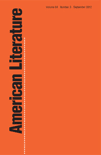
AMERICAN LITERATURE
Charting New Territories in Literary Theory and TraditionAMERICAN LITERATURE is a premier academic journal published by DUKE UNIVERSITY PRESS, dedicated to enhancing the understanding of literature produced in the United States from the colonial period to contemporary works. With its ISSN 0002-9831 and E-ISSN 1527-2117, this influential journal has maintained its status as a leader in the field, achieving a commendable Q1 ranking in Literature and Literary Theory for 2023, and holding a notable position (ranked #169 out of 1106) within its Scopus category. Since its inception in 1968, the journal has committed to publishing innovative research that explores diverse literary traditions, critical theories, and cultural contexts, making it an essential resource for researchers, scholars, and students alike. Although not available as an open-access publication, AMERICAN LITERATURE continues to play a critical role in shaping conversations around the complex narratives that define American literary heritage, inviting contributions that push the boundaries of literary studies.
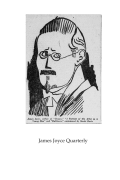
JAMES JOYCE QUARTERLY
Exploring the Depths of Joycean InnovationJAMES JOYCE QUARTERLY is a distinguished journal devoted to the scholarship and exploration of the works of James Joyce, a pivotal figure in modern literature. Published by University of Tulsa, this journal plays a vital role in fostering a deeper understanding of Joyce's contributions to literary theory and narrative innovation. The journal does not currently offer Open Access options, yet it continually engages with both established scholars and emerging voices in the field. With its ISSN 0021-4183 and E-ISSN 1938-6036, the JAMES JOYCE QUARTERLY has established itself within the literature and literary theory landscape, earning a 2023 Scopus rank of #842 out of 1,106 in its category, which places it in the 23rd percentile. Engaging readers from its inception in 1989 and through various publication cycles, this quarterly invites contributions that challenge, critique, and expand upon Joycean studies. As a Q4 journal, it serves as an accessible platform for emerging research in literary scholarship, making it an invaluable resource for researchers, professionals, and students seeking to delve deeper into the nuances of Joyce's literary prowess.
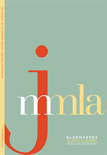
JOURNAL OF THE MIDWEST MODERN LANGUAGE ASSOCIATION
Fostering Innovation in Literary Theory and CritiqueJOURNAL OF THE MIDWEST MODERN LANGUAGE ASSOCIATION is a vital academic platform dedicated to the exploration and advancement of literature and literary theory, published by the respected MIDWEST MODERN LANGUAGE ASSOCIATION. This journal, issued under the ISSN 0742-5562 and E-ISSN 2162-6294, has been a key resource for scholars and enthusiasts in the field since 2002, bridging insightful scholarship and contemporary literary discussions. With a current Scopus rank of #1055 out of 1106 in the category of Arts and Humanities within Literature and Literary Theory, and indexed in the Q3 quartile, it serves as a repository of diverse perspectives, critical analyses, and innovative thought. Although it is not an open-access journal, it invites contributions from a wide range of authors, promising to nurture a vibrant academic discourse. Located in the heart of Chicago at LOYOLA UNIVERSITY CHICAGO, this journal plays an essential role in fostering community among researchers, professionals, and students devoted to enriching the understanding of modern literature and its theories.

Feminist German Studies
Challenging Norms, Transforming NarrativesFeminist German Studies, published by UNIVERSITY OF NEBRASKA PRESS, is a pivotal academic journal dedicated to exploring the intersection of feminism and German studies, providing a platform for innovative scholarship in the fields of cultural studies, gender studies, and linguistics. With an ISSN of 2578-5206 and an E-ISSN of 2578-5192, this journal aims to foster critical discourse on topics pertinent to gender dynamics within German-speaking contexts. Although currently classified in Q4 quartiles across various categories, including Arts and Humanities and Cultural Studies, its innovative contributions serve as a catalyst for engaging with contemporary feminist issues. The journal spans a converged publication period from 2018 to 2024, drawing together diverse academic contributions that challenge traditional narratives and promote new understandings. While not an open-access journal, Feminist German Studies remains an essential resource for researchers, professionals, and students committed to advancing feminist thought and scholarship within the increasingly relevant context of German studies.